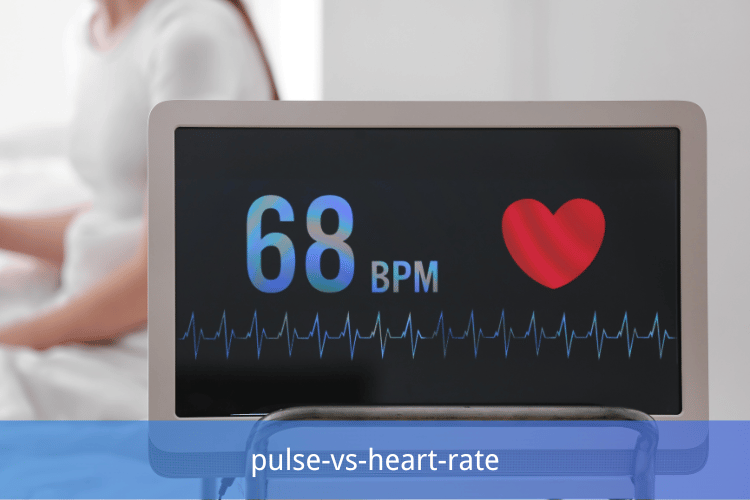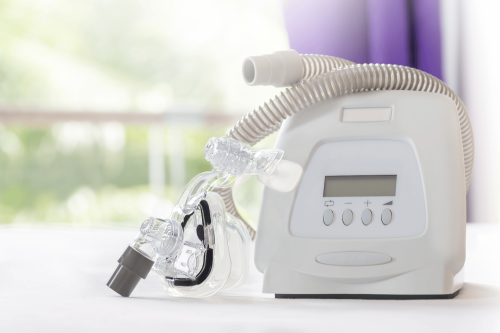
If you've ever placed two fingers on your wrist or neck to check your heartbeat, you've measured your pulse. At the same time, fitness trackers and smartwatches often display your "heart rate." While these terms are frequently used interchangeably, they aren’t the same.
For the average person, the distinction might seem trivial—after all, both relate to the rhythm of your heart. However, understanding the subtle differences between pulse and heart rate can be crucial for accurate health monitoring in medical and physiological contexts.
Let’s break down what each term means, how they’re measured, and when they might differ.
What Is Heart Rate?
Definition and Function of Heart Rate
Heart rate refers to the number of times your heart beats per minute (bpm). It acts as a key indicator of the cardiovascular system's activity, reflecting how hard your heart is working to circulate blood throughout your body. Each heartbeat occurs as the heart contracts to pump oxygen-rich blood to organs and tissues while simultaneously sending oxygen-depleted blood to the lungs for oxygenation. Together, this process maintains the body's vital functions.
Various factors influence the heart rate, including physical activity, emotional states, and overall health. For example, during exercise, the heart rate increases to meet the body’s heightened demand for oxygen. Conversely, it decreases during periods of rest or sleep when the body requires less oxygen.
There are different types of heart rates commonly discussed:
- Resting heart rate: Measured when calm and at rest, it typically falls between 60 and 100 bpm for healthy adults.
- Maximum heart rate: This is the highest number your heart can achieve during intense physical activity, which is often estimated using the formula "220 minus your age."
- Target heart rate: This range represents the optimal bpm during exercise, allowing for cardiovascular benefits without overexertion.

Doctor checking elderly man's heart rate
How Heart Rate Reflects Cardiovascular Health?
Heart rate is a vital sign that offers valuable insights into your cardiovascular system and overall well-being. A heart rate outside the normal range can indicate potential health issues requiring further investigation or medical attention.
-
Resting Heart Rate as a Health Predictor A lower resting heart rate suggests better cardiovascular fitness and efficient heart function. Well-trained athletes, for example, may have a resting heart rate closer to 40 bpm. On the other hand, chronically high resting heart rates may indicate conditions such as hypertension, stress, or even underlying heart disease.
-
Heart Rate Variability Heart rate variability (HRV) refers to the variation in time between each heartbeat. A higher HRV generally indicates better cardiovascular system adaptability and overall health, while a consistently low HRV may signify stress, fatigue, or potential health problems.
-
Irregular Heartbeats Monitoring your heart rate can help identify arrhythmias, which are irregular heartbeats. Some irregularities, such as atrial fibrillation, may increase the risk of stroke and other cardiovascular complications if left untreated.
-
Response to Exercise During physical activity, your heart rate rises to supply muscles with oxygenated blood. How quickly your heart rate returns to its resting level post-exercise can be a measure of cardiovascular fitness. Faster recovery is generally linked to better heart health.
-
Indicators of Stress and Overtraining Frequent spikes in heart rate at rest or during routine activities can signal chronic stress or overtraining in athletes. Regular monitoring can help detect these issues early, allowing for adjustments in lifestyle or training regimens.
Understanding and maintaining your heart rate within a healthy range can significantly contribute to long-term well-being. Regular monitoring, whether through manual tracking or wearable devices, provides valuable feedback about cardiovascular health and highlights when professional medical advice might be needed.
What Is Pulse Rate?
Definition and Function of Pulse Rate
The pulse rate is the number of times your heart beats in one minute, typically measured in beats per minute (BPM). It is a key indicator of how your heart functions and is critical in circulating blood throughout the body. The pulse can be felt in areas where an artery lies close to the skin, such as the wrist, neck, or inside the elbow.
The primary function of the pulse rate is to ensure that oxygen-rich blood is delivered to the tissues and organs while removing carbon dioxide and other waste products. The heart contracts rhythmically, creating pressure waves that travel through the arteries, which feel like "pulses" when palpated. This repetitive activity is essential for maintaining life.
Normal pulse rates vary depending on age, activity level, and overall health. A healthy pulse rate typically ranges between 60 and 100 BPM for most adults at rest. However, athletes and physically fit individuals often have lower resting pulse rates due to their heart's greater efficiency.

Pulse Taking
How Pulse Rate Relates to Circulatory Health?
The pulse rate serves as a valuable window into the state of your cardiovascular system. A normal, steady pulse rate generally indicates that your heart and blood vessels function correctly, delivering nutrients and oxygen efficiently. However, variations in the pulse rate can signal potential issues with circulatory health.
-
High Pulse Rate (Tachycardia): A consistently elevated pulse rate at rest may indicate dehydration, fever, stress, or severe problems like arrhythmias or heart disease. Over time, persistent tachycardia can strain the heart and increase the risk of complications.
-
Low Pulse Rate (Bradycardia): While a lower-than-average pulse is typical for athletes, a pulse rate that is too low for the individual's activity level may point to underlying issues such as electrolyte imbalances, certain medications, or heart conduction problems.
-
Irregular Pulse Patterns: Irregularities in rhythm or strength of pulse can reflect arrhythmias, which may require medical evaluation and treatment.
Monitoring your pulse rate regularly is a practical, straightforward way to assess your circulatory health. Coupled with measurements like blood pressure and medical examinations, pulse rate analysis provides a comprehensive picture of heart health. Changes in pulse rate, whether due to lifestyle factors or medical conditions, can help guide decisions about prevention or intervention to maintain overall cardiovascular well-being.
Key Differences Between Heart Rate and Pulse Rate
Measurement Methods
Understanding the methods used to measure heart and pulse rates reveals distinct differences. Heart rate refers to the number of times the heart beats per minute (bpm) and is typically measured using advanced tools such as electrocardiograms (ECGs) or heart rate monitors. These devices work by detecting the heart's electrical activity, providing a precise reading of its rhythmic contractions.
Conversely, the pulse rate is the number of times the arteries expand and contract per minute as blood is pumped through them. It can be measured manually by palpating superficial arteries, such as those in the wrist or neck, or using devices like pulse oximeters. While closely related, pulse rate reflects the physical manifestation of the heart's pumping action, rather than the electrical activity recorded in heart rate measurements.
Clinical Significance
Evaluating the clinical importance of heart and pulse rates helps to understand their roles in monitoring health. Heart rate is a fundamental indicator of cardiac function and efficiency. It provides insights into cardiovascular health and helps diagnose arrhythmias, bradycardia, or tachycardia. For example, elevated heart rate readings during rest may signal potential cardiovascular conditions or systemic stress.
Pulse rate also holds significant clinical value, as it can offer indirect evidence of heart function and blood flow quality. A pulse that is difficult to detect or irregular may indicate peripheral vascular issues or cardiac arrhythmias. However, measuring pulse rate alone can lead to discrepancies in specific cases, such as when pulse deficit occurs. This condition happens when the heartbeats are not strong enough to generate palpable arterial pulses, a phenomenon often linked to atrial fibrillation.
Ultimately, these measurements serve complementary roles. While heart rate directly measures heart activity, pulse rate provides a more tangible, accessible means of monitoring circulation, especially in non-clinical settings.
Variations in Specific Conditions
Certain medical or physiological conditions can create discrepancies between heart and pulse rates, highlighting critical variations. For instance, atrial fibrillation, an irregular heart rhythm, often leads to a pulse deficit. This discrepancy occurs because some of the heart's contractions are too weak to produce a palpable pulse, resulting in a mismatch between the heart and pulse rates.
Another example includes arterial blockages or peripheral vascular disease, where reduced blood flow may dampen the detectability of a pulse, even when the heart rate remains unaffected. Similarly, during episodes of sepsis or shock, weakened cardiovascular function can lead to faint or imperceptible pulses despite a normal or elevated heart rate.
Physical activity also introduces distinctions. Heart and pulse rates typically increase during exercise, but slight variations can arise due to the body's demand for efficient blood flow. Factors such as hydration, body position, and vascular tone may all influence pulse rate independently of heart rate.
By understanding these variations, healthcare professionals can make more accurate diagnoses and tailor treatment strategies for individual patients.
Why Are Heart Rate and Pulse Rate Important for Health?
Monitoring your heart rate and pulse rate is a fundamental way to monitor your overall health. These measurements provide key insights into your heart's efficiency and can be early indicators of potential health issues. Below, we explore their significance in two critical areas: cardiovascular fitness and early warning signs of health problems.
Indicators of Cardiovascular Fitness
Heart and pulse rates are vital for assessing your cardiovascular fitness, which refers to how well your heart, lungs, and muscles work together during physical activity. These metrics can measure fitness levels and track progress over time.
1. Resting Heart Rate as a Fitness Marker Your resting heart rate is the number of times your heart beats per minute when you’re at rest. For most healthy adults, it typically falls between 60 and 100 beats per minute. A lower resting heart rate is often associated with greater cardiovascular efficiency. For instance, well-trained athletes commonly have resting heart rates below 60 beats per minute. This indicates that their heart pumps more blood with each beat, requiring fewer beats to meet the body’s needs.
2. Target Heart Rate During Exercise When you engage in physical activity, your heart rate increases to supply more oxygen-rich blood to your muscles. Your target heart rate zone, typically 50% to 85% of your maximum heart rate, is a useful range to aim for during exercise to optimize cardiovascular benefits. Working within this range helps strengthen your heart over time, improving endurance and cardiovascular health.
3. Heart Rate Recovery as a Measure of Fitness Another significant indicator of cardiovascular fitness is how quickly your heart rate returns to normal after exercise. A faster recovery rate suggests a healthier, more efficient heart. For example, if your heart rate drops by 15 to 25 beats per minute within the first minute after stopping exercise, it’s usually a sign of good cardiovascular fitness.
Early Warning Signs of Health Issues
Changes in your heart rate or pulse rate can reveal underlying health problems. Attention to these metrics can help catch potential issues before they become severe.
1. Signs of Heart Conditions An abnormally high or low resting heart rate could indicate a heart condition. For instance, bradycardia (a resting heart rate consistently below 60 beats per minute in non-athletes) might indicate problems such as a malfunctioning sinus node or other cardiac abnormalities. Similarly, a resting heart rate above 100 beats per minute, known as tachycardia, may signal an increased risk of stroke, heart failure, or other conditions.
2. Detection of Stress or Overtraining Your heart rate can also reflect non-cardiac issues like stress, dehydration, or overtraining. A consistently elevated heart rate, even during rest, may point to chronic stress or fatigue. For athletes, monitoring pulse rate trends can help prevent overtraining and the associated risks of injury or burnout.
3. Recognizing Signs of Illness One of the earliest signs of an infection or illness is often a change in pulse rate. For instance, a fever usually results in an elevated heart rate as the body works harder to fight off the infection. Similarly, conditions like anemia or thyroid dysfunction may also lead to noticeable changes in heart rate.
4. Unexplained Variations in Pulse Rhythm Irregular pulse patterns, such as arrhythmias, might indicate electrical abnormalities in the heart. Conditions like atrial fibrillation (AFib) can be detected through monitoring and may require medical intervention to reduce the risk of complications like blood clots or strokes.
By tracking your heart and pulse rate and noticing any irregularities or changes over time, you can gain valuable insights into your health. Regular checks, whether done manually or with wearable devices, empower you to take proactive steps in maintaining cardiovascular fitness and detecting potential problems early.
How to Measure Heart Rate and Pulse Rate?
Manual Methods (Wrist and Neck)
Measuring your heart rate manually is a straightforward process that requires no special equipment. It involves finding the pulse, essentially the rhythmic expansion and contraction of an artery as blood flows through it. Here are the two main areas to locate your pulse:
Wrist (Radial Pulse)
- Position your hand palm-up on a flat surface.
- Using the tips of your index and middle fingers, press lightly against the inside of your wrist, below the base of your thumb.
- Once you feel the pulse, count the beats for 30 seconds using a timer or clock. Multiply the number of beats you counted by two to calculate your beats per minute (BPM).
Neck (Carotid Pulse)
- Sit or stand in a relaxed position.
- Place the tips of your index and middle fingers on your neck, just to the side of your windpipe.
- Press gently until you locate your pulse. Count the beats for 30 seconds and multiply by two to determine your BPM.
Essential Tips for Manual Measurement
- Use gentle pressure. Pressing too hard can obstruct blood flow or make it difficult to feel the pulse.
- Avoid taking your carotid pulse on both sides of the neck simultaneously, as it can affect blood flow to the brain.
- Conduct the measurement while at rest to avoid variations due to physical activity or stress for the most accurate results.
Using Devices (Fitness Trackers, ECG Monitors)
Technology offers a convenient way to measure your heart rate and pulse with enhanced accuracy. These devices are handy for individuals who want to monitor their heart rate during exercise or over extended periods.
Fitness Trackers and Smartwatches
Fitness trackers and smartwatches use optical sensors to measure your heart rate by shining light into the skin and detecting changes in blood flow. To use these devices:
- Wear the device snugly on your wrist, ensuring the sensor maintains contact with your skin.
- Allow a few moments for the device to calibrate and display your heart rate. Some devices offer continuous monitoring for trends and insights.
- Review the data through the device's companion app, where you can track your heart rate over time.
While fitness trackers are user-friendly, their accuracy can sometimes be affected by motion, skin tone, or improper fit.
ECG Monitors
Electrocardiogram (ECG) monitors provide a more clinical measurement of your heart's electrical activity. These devices are often used for detailed assessments of heart health. Some portable ECG devices are designed for personal use and typically involve:
- Place your fingers on the sensor pads or attach electrodes to your chest as instructed.
- Remaining still during the measurement ensures accurate readings.
- Reviewing the data, which may include heart rate, rhythm, or other patterns, is often accessible through a mobile app.
ECG monitors are highly accurate and beneficial for identifying irregular heartbeats or other abnormalities. However, they tend to be more expensive and may require medical interpretation.
Best Practices for Accurate Measurement
No matter how you measure your heart rate or pulse, following these best practices can ensure the most reliable results:
-
Choose the Right Time Measure your heart rate at rest, usually first thing in the morning or after sitting quietly for a few minutes. Avoid checking it immediately after exercise, eating, or consuming caffeine unless you're specifically tracking those effects.
-
Maintain Consistent Conditions Measurements should be performed under similar conditions, such as at the same time of day or in the same position (sitting or lying down). This consistency helps you track changes more effectively.
-
Avoid External Interferences Device users should ensure proper fit and positioning to prevent inaccuracies. They should also avoid wearing fitness trackers too loosely or placing them over tattoos or thick wristbands, which can interfere with the sensors.
-
Relax and Stay Still Movement, stress, or tension can skew your heart rate reading. Take a few deep breaths to relax before starting the measurement.
-
Regular Monitoring Frequent and consistent tracking over time provides a clearer picture of your heart rate trends, enabling you to detect any unusual patterns that may need medical attention.
Understanding and applying these techniques, tools, and tips, you can accurately monitor and manage your heart rate and pulse, ensuring valuable insight into your overall health.
Factors That Influence Heart Rate and Pulse Rate
Understanding what affects heart and pulse rates is essential for maintaining cardiovascular health. These factors can vary greatly depending on individual circumstances, highlighting the importance of considering multiple health, lifestyle, and well-being aspects. Below, we explore the primary elements that influence these vital signs.
Physical Activity and Fitness Levels
Impact of Exercise on Heart Rate
Physical activity is one of the most significant factors affecting heart and pulse rates. During exercise, the heart beats faster to pump oxygen-rich blood to the muscles, causing an immediate increase in heart rate. Activities like running, swimming, or cycling often elevate pulse rates significantly.
Resting Heart Rate and Fitness
On the other hand, regular physical activity can lower resting heart rate over time. This happens because exercise strengthens the heart, enabling it to pump blood more efficiently. Consequently, athletes and those with higher fitness levels tend to have lower resting heart rates than individuals who lead sedentary lifestyles.
Emotional States and Stress
How Stress Affects Heart Rate
Emotions such as anxiety, fear, or excitement can cause the pulse rate to spike. This reaction is closely tied to the body’s "fight or flight" response, during which the release of stress hormones like adrenaline causes the heart to beat faster.
Calm Emotional States and Heart Rate Stabilization
Conversely, states of relaxation or calmness can help lower the heart rate. Practices such as mindfulness meditation, deep breathing, and yoga have been shown to reduce pulse rates by promoting relaxation and reducing stress-related hormones.
Medications and Stimulants
Role of Medications
Certain medications, such as beta-blockers, can lower heart rate by reducing the heart's workload. These are often used to manage conditions like high blood pressure or arrhythmias. Conversely, some drugs, such as thyroid hormone replacement therapies, can increase heart rate in individuals with low thyroid function.
Effects of Stimulants
Common stimulants, including caffeine and nicotine, directly impact pulse rate. These substances stimulate the nervous system, temporarily increasing heart rate. High doses of stimulants can lead to palpitations and irregular heartbeats.
Health Conditions
Anemia
Anemia, characterized by low levels of healthy red blood cells, can increase heart rate. The heart compensates for the reduced oxygen-carrying capacity by pumping blood more rapidly to deliver sufficient oxygen to tissues.
Thyroid Disorders
Abnormal thyroid function can also significantly influence heart rate. Hyperthyroidism (overactive thyroid) often causes an elevated heart rate, while hypothyroidism (underactive thyroid) can slow it down. Proper management of thyroid conditions is crucial to maintaining a normal heart rate.
Age and Hormonal Changes
Age-Related Changes in Heart Rate
Heart rate decreases with age as the body undergoes several physiological changes. Older adults often have a lower maximum heart rate than younger individuals, so target heart rate zones for exercise decrease with age.
Influence of Hormonal Shifts
Hormonal fluctuations also affect heart rate variability. For instance, changes in estrogen levels during menopause can lead to irregular heart rates or palpitations. Similarly, hormonal shifts during puberty can temporarily cause variations in pulse rate.
By understanding these influential factors, you can gain better insight into your cardiovascular health and make informed decisions to improve or regulate your heart and pulse rates where necessary. Regular monitoring and consultation with healthcare professionals can further ensure optimal heart function.
Normal Ranges for Heart Rate and Pulse Rate by Age
Understanding heart rate and pulse rate ranges can provide essential insights into your heart health. These vital indicators vary with age, activity level, and physical condition. Below, we explore normal resting heart rate ranges for different age groups and discuss how these rates can differ between athletes and non-athletes.
Resting Heart Rate Ranges for Different Age Groups
Resting heart rate refers to the number of heartbeats per minute while at rest. It provides a baseline indicator of cardiovascular fitness and overall health. The normal ranges for resting heart rates differ by age:
Newborns to Infants (0-12 Months)
Newborns and infants have significantly higher resting heart rates due to their developing bodies and the increased demand for oxygen.
- Newborns (0-1 month): 70-190 beats per minute (bpm)
- Infants (1-12 months): 80-160 bpm
Children (1-10 Years)
As children grow, their hearts become more efficient, leading to a gradual decrease in resting heart rate.
- Toddlers (1-3 years): 80-130 bpm
- Preschoolers (3-5 years): 80-120 bpm
- School-age children (6-10 years): 70-110 bpm
Adolescents and Teens (11-18 Years)
During adolescence, the resting heart rate stabilizes further as the body approaches adulthood. The typical range is 60-100 bpm.
Adults (19-64 Years)
The normal resting heart rate for healthy adults is usually between 60 and 100 bpm. People with higher cardiovascular fitness might measure at the lower end of this spectrum.
Older Adults (65+ Years)
While older adults generally fall within the same 60-100 bpm range, some may experience slight variations depending on factors like overall health, medications, or heart conditions.
Pulse Rate Variations in Athletes vs. Non-Athletes
Pulse rate is closely related to heart rate but can be influenced by physical conditioning and lifestyle. Athletes often experience notable differences in their resting pulse rates compared to non-athletes. These differences highlight the impact of exercise and cardiovascular fitness on heart function.
Athletes
Athletes typically have lower resting pulse rates due to their well-conditioned cardiovascular systems. Regular training strengthens the heart muscle, allowing it to pump more blood each beat.
- Elite athletes may have a resting heart rate as low as 40-60 bpm, which is considered normal for this group.
- For example, endurance runners or cyclists often show these lower rates because their hearts are highly efficient.
Non-Athletes
Non-athletes generally have higher resting pulse rates compared to athletes. This is because their hearts may not pump blood as effectively, and they might not have the same level of cardiovascular endurance.
- The typical resting pulse rate averages between 60 and 100 bpm for the average sedentary adult.
- However, elevated rates toward the higher end of this range could indicate poor fitness or potential health issues, such as stress, dehydration, or an underlying medical condition.
Key Factors Influencing the Differences
The variance between athletes and non-athletes can be attributed to several factors:
- Heart Efficiency: A stronger heart muscle in athletes means fewer beats are needed to circulate blood.
- Cardiovascular Adaptation: Regular exercise increases the heart's blood volume with each beat (stroke volume).
- Recovery Time: Athletes' pulse rates return to resting levels faster after physical activity, whereas non-athletes may require more time.
Heart and pulse rates are dynamic metrics that change across different stages of life and can vary widely between individuals based on their activity levels. Knowing the normal ranges for your age group and understanding how factors like athletic conditioning influence pulse rates are crucial for monitoring and maintaining optimal cardiovascular health.
When to Seek Medical Advice for Abnormal Heart or Pulse Rates?
Signs of Tachycardia (High Heart Rate)
Tachycardia occurs when the heart beats faster than normal while at rest. A resting heart rate above 100 beats per minute (bpm) is considered tachycardia for most adults. Although occasional increases in heart rate are expected, such as during exercise, stress, or excitement, persistent or unexplained tachycardia can indicate an underlying health issue.
Common signs of tachycardia include:
- Heart palpitations: A sensation where your heart feels racing, pounding, or fluttering.
- Shortness of breath: Difficulty catching your breath, even when you're at rest.
- Lightheadedness or dizziness: Feeling faint or unsteady due to reduced blood flow to the brain.
- Chest pain or discomfort: Chest tightness or pressure could be a sign of heart strain.
- Fatigue: A persistent, unexplainable sense of tiredness.
- Fainting (syncope): A sudden loss of consciousness caused by insufficient blood flow to the brain.
Occasional episodes of tachycardia might resolve on their own, but consistently high heart rates or the onset of symptoms like chest pain or fainting warrant medical attention.
Signs of Bradycardia (Low Heart Rate)
Bradycardia is characterized by a resting heart rate slower than 60 bpm. While a slow heart rate can be expected for well-trained athletes or during sleep, bradycardia may signal an issue if symptoms accompany it or if it disrupts the body's ability to pump enough blood.
Key signs of bradycardia include:
- Fatigue or weakness: A slower heart rate might cause reduced oxygenation, leading to lethargy and lack of energy.
- Trouble exercising or reduced stamina: Difficulty keeping up with physical activity due to insufficient blood circulation.
- Dizziness or lightheadedness: Feeling faint, especially during physical movement or after standing up.
- Shortness of breath: A sense of breathlessness during minimal exertion or even at rest.
- Confusion or memory problems: Insufficient oxygen delivery to the brain may impair cognitive functions.
- Chest pain or discomfort in prolonged cases.
- Fainting or near-fainting episodes (syncope): A result of inadequate blood flow to the brain.
Bradycardia can be particularly concerning if it accompanies severe symptoms or a history of heart problems. Medical evaluation may include monitoring heart rhythms or assessing potential underlying causes like electrolyte imbalances or medication side effects.
Symptoms That Require Immediate Attention
Specific symptoms associated with abnormal heart rates, whether tachycardia or bradycardia, require urgent medical attention. These signs could point to severe or life-threatening complications, including heart attack, stroke, or other cardiovascular emergencies.
Seek immediate medical care if you experience:
- Severe chest pain: Especially if the pain radiates to your jaw, left arm, or back. This can indicate a heart attack.
- Difficulty breathing or the inability to catch your breath.
- Sudden fainting or loss of consciousness (syncope): This can signal an arrhythmia or inadequate blood flow to the brain.
- Irregular heartbeats that are rapid, chaotic, or associated with a fluttering sensation in your chest.
- Extreme dizziness or confusion: These may point to reduced oxygen delivery to the brain.
- Sweating profusely without exertion or usual environmental factors.
- Cyanosis (bluish skin tone): Indicating critically low oxygen levels in the blood.
- Severe fatigue that comes on suddenly or is debilitating without an apparent cause.
Remember that these symptoms could be associated with conditions like arrhythmias, blood clots, or structural heart problems. Access to timely medical evaluation and intervention can significantly improve outcomes.
If you're unsure whether your symptoms warrant immediate care, it’s always better to avoid caution and seek emergency medical attention. Your healthcare provider can help determine the cause and recommend appropriate treatment.
Frequently Asked Questions
Q: What is the difference between heart rate and pulse rate?
A: Heart rate refers to the number of times your heart beats in one minute, while pulse rate is the number of times your heart beats can be felt at various points on the body. They are often similar but can differ under certain conditions.
Q: What is considered a normal resting heart rate?
A: A normal resting heart rate typically ranges from 60 to 100 beats per minute for adults. Factors such as fitness level and overall heart health can influence this rate.
Q: How can I check my pulse?
A: You can check your pulse by placing two fingers on the side of your neck or your wrist. Count the number of times your heart beats in 60 seconds to determine your pulse rate.
Q: What is my target heart rate during exercise?
A: Your target heart rate during exercise is generally 50% to 85% of your maximum heart rate. To find your maximum heart rate, subtract your age from 220. This range helps ensure effective cardiovascular workouts.
Q: What is a reasonable resting heart rate?
A: A reasonable resting heart rate is usually between 60 to 80 beats per minute. Athletes may have lower resting heart rates due to higher cardiovascular efficiency.
Q: What should I know about my heart rate during exercise?
A: During exercise, the heart rate increases to supply more oxygen to the muscles. It's essential to monitor your heart rate to ensure it stays within a safe range, particularly if you have any concerns about your heart health.
Q: What does it mean if my heart rate is consistently high or low?
A: A consistently high heart rate may indicate stress, anxiety, or a heart condition, while a low heart rate may suggest good cardiovascular fitness or an underlying issue. If you have concerns about your heart rhythm, it's advisable to consult with a healthcare provider.
Q: How can I lower my resting heart rate?
A: To lower your resting heart rate, engage in regular aerobic exercise, practice relaxation techniques, maintain a healthy diet, and avoid excessive caffeine and alcohol. These lifestyle changes can enhance overall heart health.
Q: What is the significance of heart rate variability?
A: Heart rate variability refers to the variation in time between each heartbeat. A higher variability is often associated with good cardiovascular health and a well-functioning autonomic nervous system, while low variability may indicate stress or health issues.
Q: When should I be concerned about my heart rate?
A: You should be concerned about your heart rate if you experience persistent abnormal heart rates, such as a heart rate consistently above 100 beats per minute (tachycardia) or below 60 beats per minute (bradycardia), especially accompanied by symptoms like dizziness, shortness of breath, or chest pain. Consult a healthcare professional if you have these concerns.
The Bottom Line
While pulse and heart rate usually align, they are not identical. Heart rate is the number of electrical impulses from the heart, whereas pulse is the physical surge of blood you can feel. Recognizing the difference is vital in emergencies (e.g., detecting arrhythmias) and for athletes optimizing performance.
For most people, wearable devices provide a close enough approximation. But in clinical settings, distinguishing between the two can be life-saving. Whether you're a healthcare professional, fitness enthusiast, or just tracking your vitals, understanding this distinction ensures better health awareness.
Next time you check your pulse or glance at your heart rate monitor, remember—they’re closely related, but not the same.








 Login with Google
Login with Google Login with Facebook
Login with Facebook